Books about Calligraphy
Shodou - The Way of Writing
My native language is German, as most of my books. But You can find books in English and other languages as well.
|
Calligraphy is yet another hobby of mine...I love it :)
Japanese characters are written in different styles, using different tools (pencils, brushes, printing etc.). Additionally, there are styles depending on "speed" of writing, where they become more and more simplified and abstract, up to a shape where the original character can no longer be recognized - it becomes art. The classic writing utensil for Asian characters is the brush, not the pencil!
|
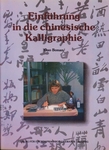
German |
Verlag für fremdsprachige Literatur Beijing Einführung in die chinesische Kalligrafie Bonan, Guo 1995 ISBN 7119014463 |
Ein sehr gutes Einsteigerbook auf deutsch,
für alle, die einfach die Zeichen faszinierend finden,
denn man kann ja auch "malen" lernen ohne die dazugehörige Sprache zu pauken - so hab ich auch angefangen :)
Es ist allerdings kein "Nachmal-Buch", sondern ein Werk für erwachsene Interessierte, es gibt viele Erleuterungen für Techniken und klassische Stilrichtungen. Die Regeln der klassischen Kalligrafie sind in China, Japan und Korea gleich, denn sie benutzen alle chinesische oder daraus abgeleitete Zeichen und schreiben mit dem Pinsel (man kann auch mit Bleistift oder Kugelschreiber Zeichen schreiben, aber das ist keine Kunst). |
|
When You want to learn more about East Asian calligraphy, good books are hard to find.
And the available are almost all Japanese or Chinese only ...
I "inherited" most of my Shodo lecture books from Matsuoka Fujio, who was a Shodo Sensei from Kumamoto, South Japan; unfortunately I never met him, he passed away several yaesr before I came to Japan ... his family gave all his books and brushes to me, they had no interest. They found it strange that a stranger like me had VERY much interest in Japanese old traditions :) |
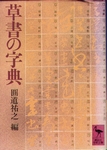
Japanese only! |
Kodansha Soshho no Jiten Iijima Shunkei 1979 no ISBN |
"Dictionary of the Grass Style" Yaya, You may say this is the way You write when You are high on grass :) ... This is a small dictionary of 900 pages showing many "grass versions" of Kanji. |

Japanese only! |
Tokyo-to Shuppan Shodou Jiten Iijima Shunkei 1975 no ISBN |
"Encyklopedia of Shodo (The Way of Writing)" This thick volume contains the history and works of the most famous Shodo Masters of China and Japan. These are as famous as Leonardo da Vinci, Rembrandt or Picasso, as a rough comparison. |
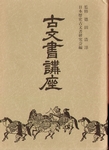
Japanese only! |
Nihon Karucha Senta Kobunsho Koza 1986 no ISBN |
"Training Course about Old Writing"
A thick slipcase with 6 volumes about classic calligraphy and its history. |
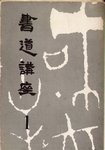
Japanese only! |
Nigensha Shodou Koza 1954, 1970 no ISBN |
"Training Course about Shodo", 6 volumes.
Each volume explains one of the six major classic styles, "grass" is only one of them. |
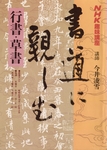
Japanese only! |
NHK Shumi Koza Shodou ni shitashimu 1987 no ISBN |
Calligraphy is taught in every Japanese school (which is why most Japanese HATE it), and there are countrywide competitions and tv reports, by NHK. The shows are issued as books, too |
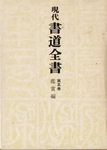
Japanese only! |
Shogaku Zusho Gendai Shodou no Zensho 1962 no ISBN |
"The Actual Big Book about The Art of Writing"
Unfortunately, I have only volume no.5 of this encyklopedia. |

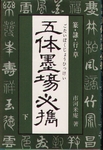
Japanese only! |
Maarusha Gotai Bokujou Bikkei 1982 ISBN 4837304508 |
Reprint of an old Japanese classic book about calligraphy, 2 volumes, 150 pages each. |
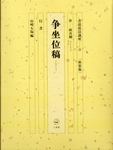
Japanese only! |
Nigensha Sou Zai Kou 1987 no ISBN |
90 pages with many examples and training pages. |
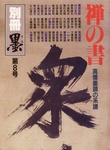
Japanese only! |
Geijutsu Shinbunsha Zen no Sho 1988 no ISBN |
"The Writing Art of Zen"
Special volume of the "Geijutsu Shinbun" magazine, 240 pages |
And of course, I have many magazines about Shodo, too.